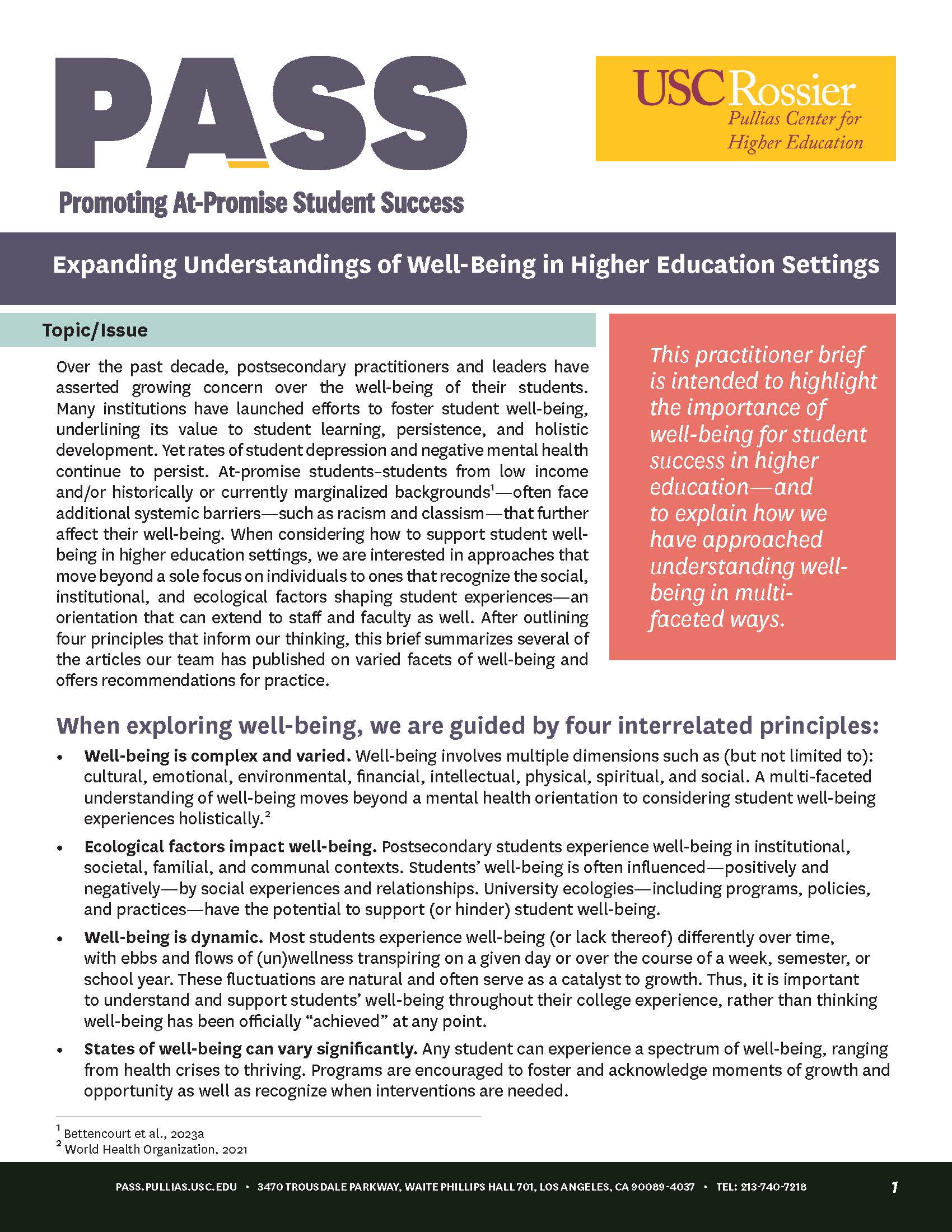Expanding Understandings of Well-Being in Higher Education Settings

Over the past decade, postsecondary practitioners and leaders have asserted growing concern over the well-being of their students. Many institutions have launched efforts to foster student well-being, underlining its value to student learning, persistence, and holistic development. Yet rates of student depression and negative mental health continue to persist. At-promise students–students from low income and/or historically or currently marginalized backgrounds—often face additional systemic barriers—such as racism and classism—that further affect their well-being. When considering how to support student well-being in higher education settings, we are interested in approaches that move beyond a sole focus on individuals to ones that recognize the social, institutional, and ecological factors shaping student experiences—an orientation that can extend to staff and faculty as well. After outlining four principles that inform our thinking, this brief summarizes several of the articles our team has published on varied facets of well-being and offers recommendations for practice.







